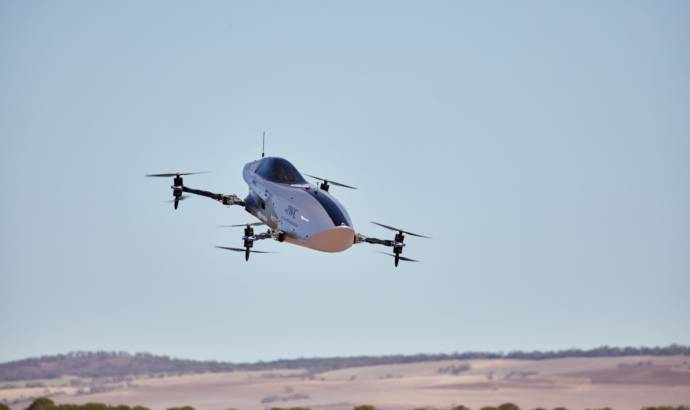Flying cars could become a reality in the next few years. We are getting closer to the moment when we will see such transportation around the city.
In the summer of 2019, entrepreneur Matthew Pearson stated his ambition to create the world’s first racing series for electric flying cars. Now it is making history through the first flights of a full-scale electric flying racing car, the remotely-piloted Alauda Mk3.
These historic first flights have taken place at undisclosed test locations in the deserts of South Australia under the observation of Australia’s Civil Aviation Safety Authority (CASA). Throughout the development process, the Alauda team has worked with the regulator to ensure compliance to all required procedures while developing robust safety protocols. The successful execution of these flights means that uncrewed electric flying car Grand Prixs will take place in 2021 at three soon-to-be-revealed international locations.
These races will see elite pilots drawn from aviation, motorsport and eSports backgrounds to remotely pilot the world’s only racing electric vertical take-off and landing (eVTOL) craft. These pilots will remotely control their Speeders in races across electronically governed , Augmented Reality enabled sky-tracks. Audiences will watch via digital streams that show the full dynamic potential of vehicles that have greater thrust-to-weight ratio than a F15 fighter jet.
These races will rapidly hasten the arrival of eVTOL advanced air mobility craft. This technology, predicted by Morgan Stanley to be worth $1.5 trillion by 2040 is already finding potent applications in air logistics and remote medical care, and has the potential to liberate cities from congestion though clean-air passenger applications like air taxis.
By creating the world’s first racing series for electric flying cars, Alauda Aeronautics takes a leadership position in this generation’s defining mobility revolution. It does this by providing a place and a space to rapidly accelerate the development of the key safety, performance, and dynamics technologies that will underpin the growth of eVTOL transportation.
To execute the creation of an entirely new classification of advanced aircraft, Pearson has gathered a world-class team of technical experts, engineers and designers from F1, performance automotive and civil and military aviation backgrounds. This includes: McLaren, Brabham, Boeing, Jaguar, and Rolls-Royce.
At maximum power, the craft delivers 320kW, equalling an Audi SQ7 performance SUV. The Audi weighs 2,500kg while an Airspeeder racing craft (without pilot) weighs just 130kg. It can lift a weight of more than 80kg, proving the viability of the powertrain for piloted races. Acceleration from 0-62mph takes 2.8 seconds and the Speeder can climb to 500 meters.
A Speeder can turn with extraordinary speed when compared to a traditional fixed wing aircraft or helicopter. The Mk3 vehicle has a thrust-to-weight ratio of 3.5, which exceeds that of an F-15E Strike Eagle (thrust-to-weight ratio of 1.2), one of the most advanced fighter aircraft in the world.
Source: Airspeeder


